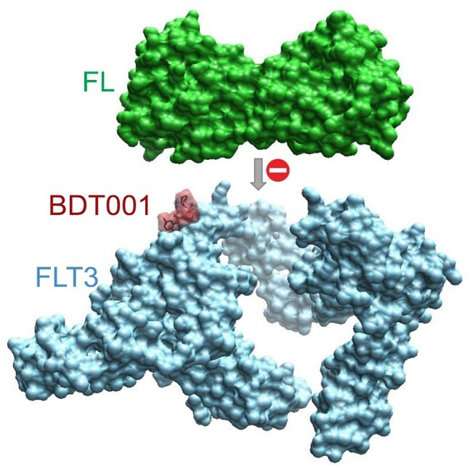A new solution for chronic pain

Neuropathic pain is a chronic condition affecting 7 to 10 percent the population in France, and for which there is no effective treatment. Researchers at the Institute for Neurosciences of Montpellier (INSERM/Université de Montpellier) and the Laboratory for Therapeutic Innovation (CNRS/Université de Strasbourg) have uncovered the mechanism behind the appearance and continuation of pain. They have developed an innovative treatment that produced an immediate, robust and long-lasting therapeutic effect on pain symptoms in animal subjects. The study was published in Nature Communications.
The study reports the unexpected role played by the molecule FLT3 in chronic pain, which has multiple blood functions and is produced by hematopoietic stem cells, which generate all blood cells. Neuropathic pain is caused by a lesion in peripheral nerves due to diseases such as diabetes, cancer or shingles, or surgery-related trauma. In this study, researchers showed that immune cells in the blood that flood the nerve at the site of the lesion synthesise and release another molecule, FL, which binds with and activates FLT3, triggering a chain reaction in the sensory system, causing pain. The researchers report that FLT3 induces and maintains pain by acting far upstream on other components in the sensory system known for making pain chronic.
After discovering the role of FLT3, researchers created an anti-FLT3 molecule (BDT001) to target the FL binding site using detailed computer analysis of 3 million possible configurations. This molecule blocks the connection between FL and FLT3, preventing the chain of events leading to chronic pain. When administered to animal subjects, BDT001, after three hours, reduced typical neuropathic pain symptoms such as hyperalgesia, a heightened sensibility to pain, as well as allodynia, pain caused by stimuli which normally do not provoke pain, with effects lasting 48 hours after a single dose.
Neuropathic pain, which affects approximately 4 million people in France, is a debilitating disease with significant social costs. Current forms of treatment, essentially based on off-label uses of medication such as anti-depressants and anti-epileptics, are ineffective: less than 50 percent of patients obtain a significant reduction in pain. Furthermore, such treatments can cause important side effects. Innovative therapies based on this research are being developed by Biodol Therapeutics, a start-up firm which may, as a result, design the first specific therapy against neuropathic pain, and, in the long term, provide relief to many people.
More information: Cyril Rivat et al, Inhibition of neuronal FLT3 receptor tyrosine kinase alleviates peripheral neuropathic pain in mice, Nature Communications (2018). DOI: 10.1038/s41467-018-03496-2
















